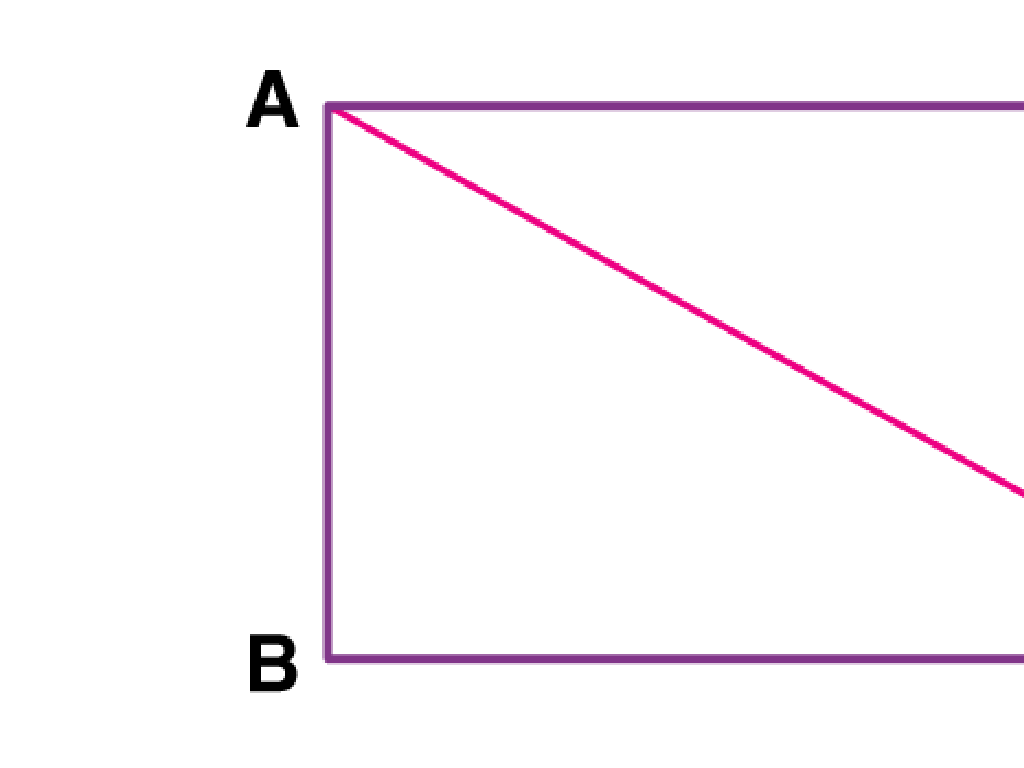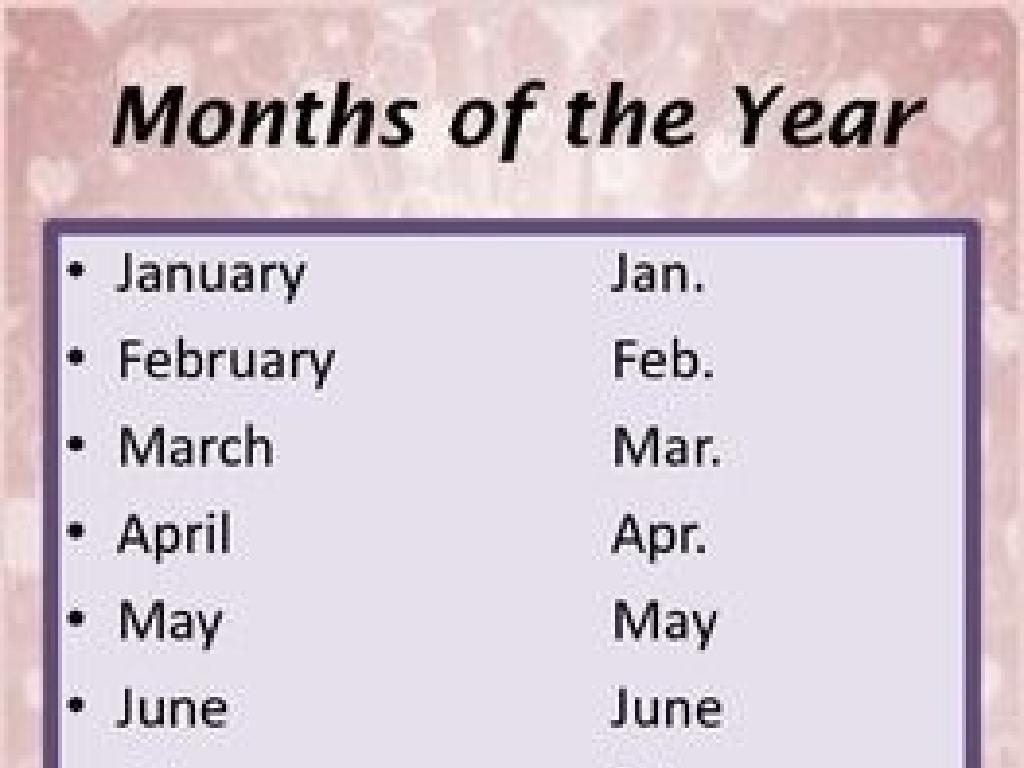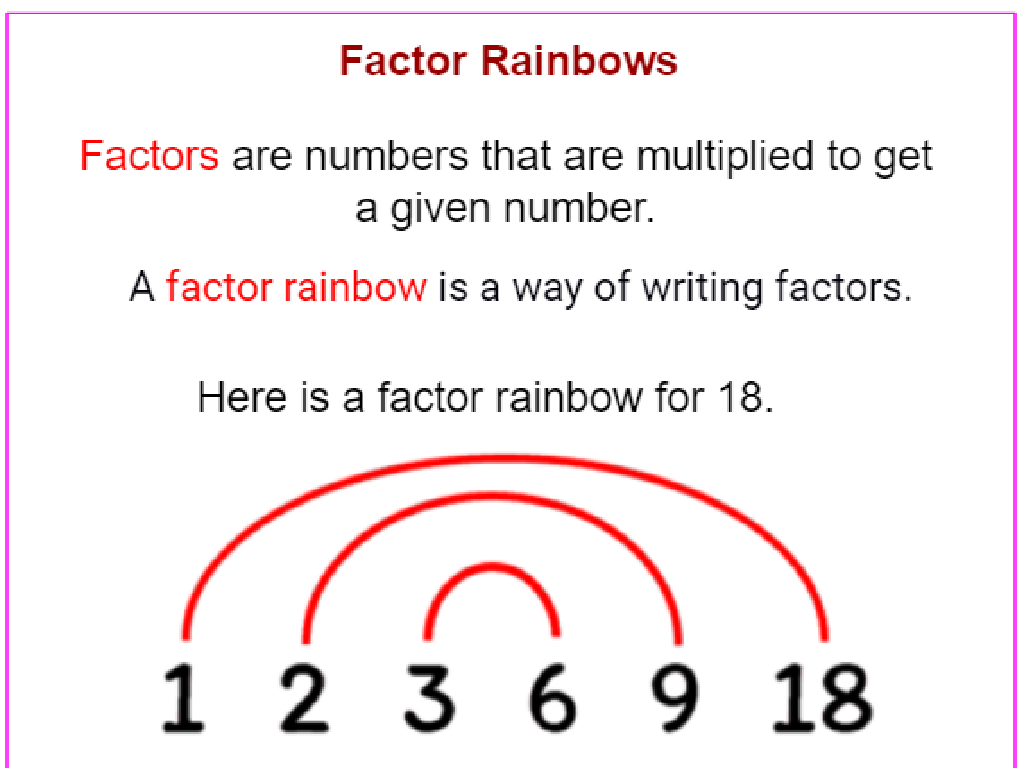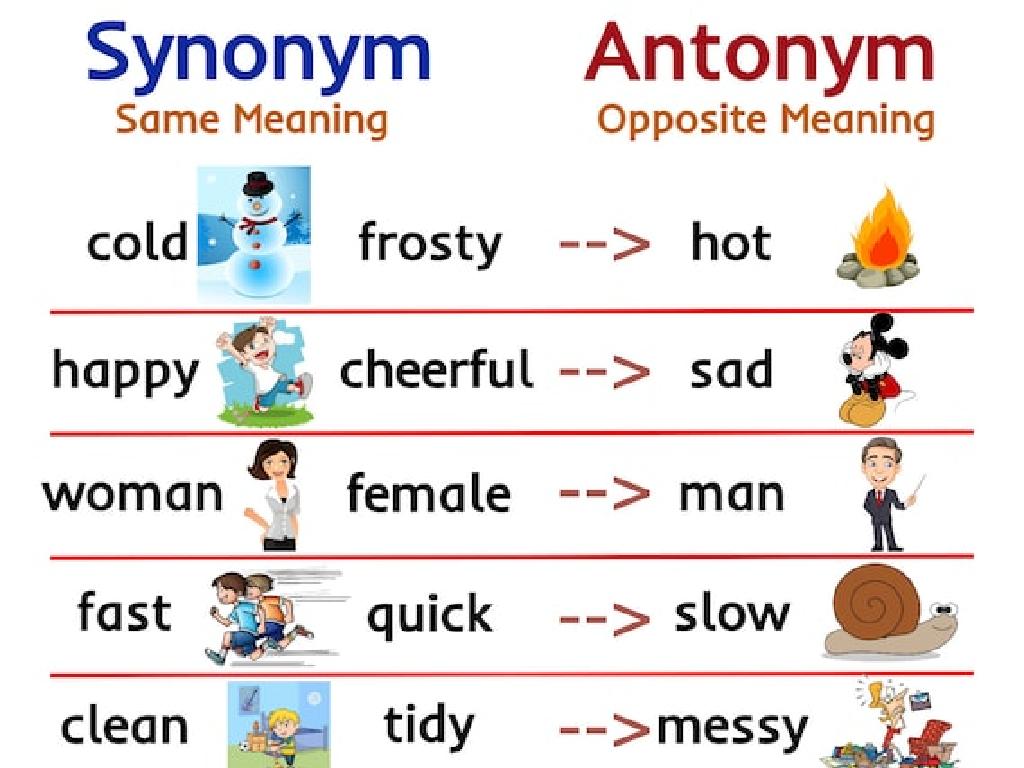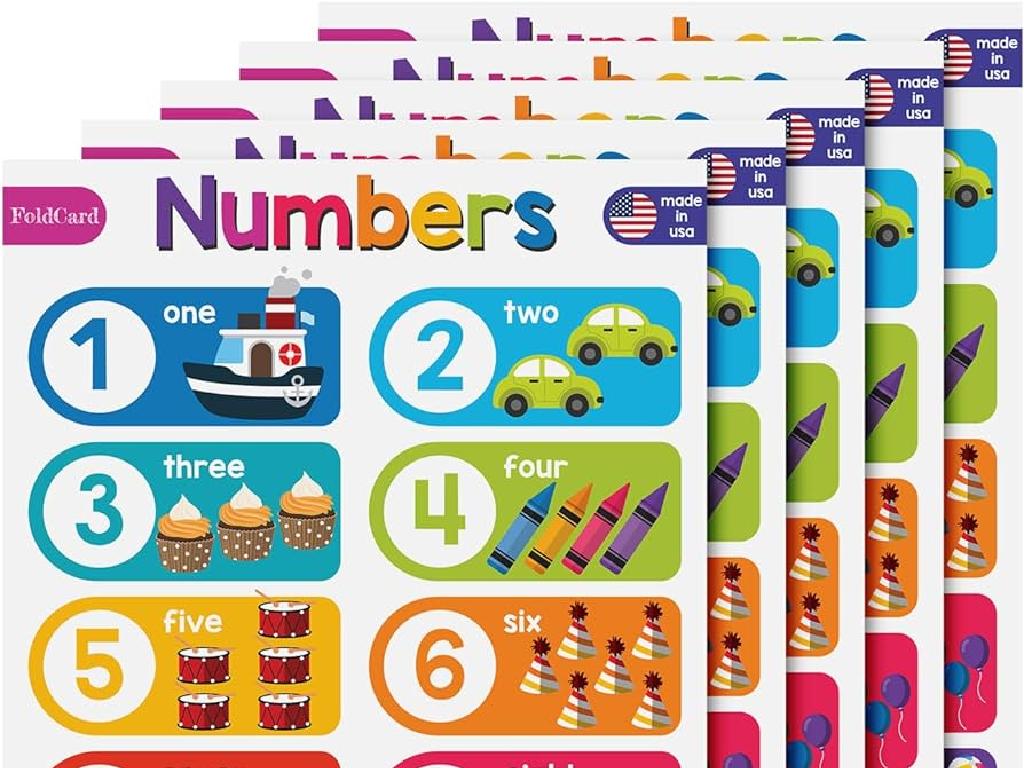Choose The Picture That Matches The Short E Word
Subject: Language arts
Grade: Kindergarten
Topic: Short E
Please LOG IN to download the presentation. Access is available to registered users only.
View More Content
Welcome to Short ‘e’ Sounds!
– Greet the class with enthusiasm
– Introduce the short ‘e’ sound
– The sound ‘e’ makes in words like ‘bed’
– Practice saying ‘eh’ together
– Repeat after me: ‘eh’ as in ‘bed’, ‘red’, ‘ten’
– Relate ‘eh’ to familiar words
– Words like ‘bed’, ‘pet’, ‘net’ have the short ‘e’ sound
|
Begin the class with a warm and cheerful greeting to set a positive tone. Introduce the short ‘e’ sound by emphasizing its pronunciation and providing clear examples. Engage the students by having them practice the sound in unison. Use common words that they are likely to know, such as ‘bed’, to help them connect the sound to their existing vocabulary. Encourage them to notice this sound in words they hear throughout the day. This will help them recognize and pronounce the short ‘e’ sound in their reading and speaking activities.
The Short ‘e’ Sound
– What is the short ‘e’ sound?
– It’s the ‘eh’ sound in some words.
– Examples: ‘bed’, ‘red’, ‘hen’
– Words like ‘bed’, ‘red’, and ‘hen’ have the short ‘e’ sound.
– Practice saying ‘eh’ together
– We’ll all say the ‘eh’ sound out loud as a class!
– Matching game with pictures
– Find pictures that show words with the short ‘e’ sound.
|
This slide introduces the concept of the short ‘e’ sound to Kindergarten students. Start by explaining the sound and providing clear examples that the children are likely familiar with. Engage the class by saying the ‘eh’ sound in unison to reinforce the lesson. Follow up with a matching game where students choose pictures that represent words with the short ‘e’ sound, such as a bed, a red apple, or a hen. This interactive activity will help solidify their understanding of the short ‘e’ sound in a fun and engaging way.
Listening for Short ‘e’ Sounds
– Listen for the ‘eh’ sound
– I say a word, you listen
– Does ‘net’ have short ‘e’?
– ‘Net’ has the ‘eh’ sound. Do you hear it?
– What about ‘dog’ and ‘pen’?
– ‘Dog’ does not, but ‘pen’ does. Listen closely!
|
This slide is designed to engage Kindergarten students in an auditory activity to identify the short ‘e’ sound in words. Start by explaining that the short ‘e’ sounds like ‘eh’. Pronounce a series of words clearly, including ‘net’, ‘dog’, and ‘pen’, and ask the students to listen and determine if they hear the short ‘e’ sound. For the word ‘net’, emphasize the ‘eh’ sound and confirm with the students that it contains the short ‘e’. For ‘dog’, clarify that it does not contain the short ‘e’ sound, and for ‘pen’, reinforce the ‘eh’ sound again. This activity helps students to differentiate between words that do and do not contain the short ‘e’ sound. Encourage the students to practice with more words and provide immediate feedback to reinforce learning.
Matching Short ‘e’ Sounds to Pictures
– Match words with short ‘e’
– I show a picture, you name it
– Example: Picture of a ‘bed’
– ‘bed’ has the short ‘e’ sound like in ‘red’
– Practice saying ‘bed’ together
– Repeat the word ‘bed’ to practice the short ‘e’ sound
|
This slide is designed to help Kindergarten students recognize and pronounce words with the short ‘e’ sound. Start by explaining that they will be matching words to pictures. Show them a picture and prompt them to say the word that matches. Use the example of a ‘bed’ to illustrate the activity. Encourage the children to say ‘bed’ out loud as a group to reinforce the short ‘e’ sound. Make sure to praise their efforts and correct gently if needed. For the activity, have a set of pictures ready that represent words with the short ‘e’ sound, such as ‘net’, ‘pet’, ‘leg’, and ‘hen’. Allow each student to participate by naming the pictures as you go through them.
Practice Time: Matching Short ‘e’ Words
– Get your matching worksheet
– Look at the pictures carefully
– Notice the shapes, colors, and actions in the pictures
– Find words with the short ‘e’ sound
– Words like ‘bed’, ‘net’, ‘red’, and ‘pet’
– Draw a line to the matching picture
|
This activity is designed to help Kindergarten students recognize and match words with the short ‘e’ sound to corresponding pictures. Hand out worksheets with a variety of images and words to the students. Instruct them to say the words out loud to hear the short ‘e’ sound and then draw a line from each word to the picture that represents it. For example, they would match ‘bed’ to a picture of a bed. This exercise will reinforce their phonemic awareness of the short ‘e’ sound. Encourage them to ask for help if they are unsure and praise their efforts to promote confidence.
Let’s Review: Short ‘e’ Sounds
– What’s the short ‘e’ sound?
– The short ‘e’ sounds like ‘eh’, as in ‘bed’
– Find the ‘e’ sound in ‘net’
– The ‘e’ in ‘net’ sounds like ‘eh’. Say it out loud!
– Match words to pictures
– Look at pictures, say the word, does it have the ‘eh’ sound?
– Celebrate your great work!
|
This slide is a review of the short ‘e’ sound for Kindergarten students. Start by asking the class to recall the sound that the short ‘e’ makes, which is ‘eh’ like in ‘bed’ or ‘red’. Then, engage the students by asking them to find this sound in the word ‘net’. Following this, congratulate the students on their ability to match words containing the short ‘e’ sound to the correct pictures. This reinforces their understanding and provides positive reinforcement for their learning. Encourage the students to practice the short ‘e’ sound with different words and pictures to solidify their grasp of the concept.
Class Activity: Picture Bingo with Short ‘e’ Words
– Play Picture Bingo together
– Listen for words with short ‘e’
– Words like ‘bed’, ‘net’, ‘red’
– Cover the matching picture
– Shout ‘Bingo!’ when all covered
|
This interactive activity is designed to help Kindergarten students recognize and associate the short ‘e’ sound with corresponding images. Before starting, ensure each student has a bingo card with pictures that represent short ‘e’ words. As the teacher calls out words, students will listen for the short ‘e’ sound and place a marker on the matching picture. Examples of words to call out include ‘bed’, ‘net’, ‘red’, ‘pet’, and ‘wet’. The game continues until a student covers all images on their card and shouts ‘Bingo!’. This activity reinforces phonemic awareness and provides a fun way for students to engage with short ‘e’ words. Prepare a small prize for the winner to make the game exciting and rewarding.

